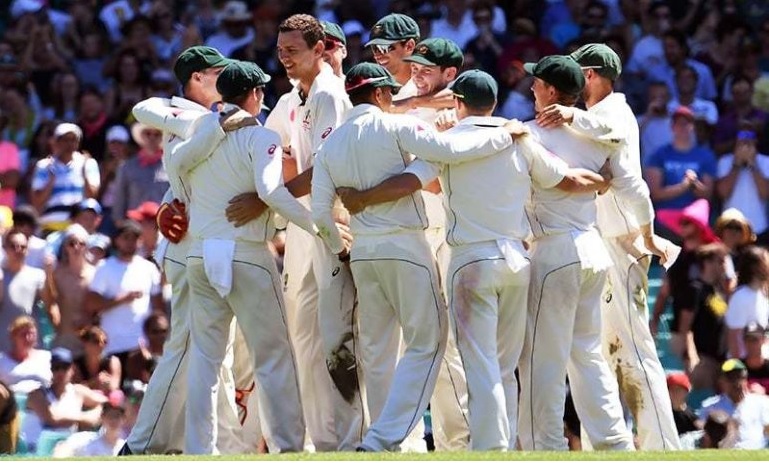MELBOURNE, (Reuters) – Cricket Australia and the Australian Cricketers’ Association announced they had agreed a new pay deal “in principle” on Thursday, finally ending an acrimonious dispute that threatened a tour of Bangladesh and this year’s Ashes series.
The previous five-year collective bargaining agreement expired on June 30, which had left about 230 players effectively unemployed and forced the cancellation of Australia’s ‘A’ tour of South Africa.
The immediate repercussions of the deal are that two tests in Bangladesh will now go ahead in August and September with the Australia squad scheduled to gather in Darwin next week for a pre-tour camp.
“In announcing this agreement we are restoring certainty, beginning to repair relationships, especially with the fans,” Cricket Australia chief James Sutherland told reporters.
“We want the focus to be back on the cricket … I’m very confident by the time the first ball is bowled this summer all of this will be well and truly behind us.”
Both the board and the players’ union were bruised in the tortuous 10-month negotiation but ultimately the deal represents an emphatic win for the players and a huge back-down by the board.
Cricket Australia had tried to jettison a 20-year-old model of under which players receive a fixed percentage of revenue, saying it was unfit for modern times and starving the grass-roots of funding.
The players, though, were adamant the arrangement should be retained and it survived in the “heads of agreement”, the deal put in place while the broader Memorandum of Understanding (MOU) is hammered out over the next four to six weeks.
A tired-looking Sutherland declined to say whether the deal was a win for the players, but insisted it was a win “for the game” that would allow greater investment in the grass-roots.
“It’s a very different revenue-share model to what was previously the case. It’s been modernised to allow the game more flexibility,” he said, seated next to union chief Alistair Nicholson at the Melbourne Cricket Ground.
“Neither side has got everything we wanted out of these negotiations but they shouldn’t be approached with a winner takes all mindset. In that spirit, I think we’ve reached a good compromise.”
Nicholson said players would share up to 30 percent of agreed revenue consisting of 27.5 percent of forecast revenue streams and a 2.5 percent performance pool.
“This is estimated to be up to A$500 million ($396 million) in the next five-year period,” he added, outlining the agreement.
“A revenue sharing model ensuring all players, male and female, are partners in the game of cricket.”
The dispute overshadowed Australia’s home summer of cricket and grew increasingly bitter as both sides took to airing their grievances in public.
The union refused to deal with CA’s lead negotiator and were angered when Sutherland warned players would be unemployed and unpaid without a new agreement on the table.
Players subsequently boycotted the ‘A’ tour and warned the tours to Bangladesh, India and the Ashes series were under threat.
Sutherland said both parties regretted that the dispute had become a turn-off for fans and Nicholson left little doubt there was still some bad blood between the players and the board.
“I think that will take some time (to repair),” he said. “But that’s something we will now work through together and for the good of the game.”
Australia vice captain David Warner, a vocal proponent of the players’ position throughout the dispute, made clear his approval.
“Great outcome to retain the revenue share for all players now and in the future while supporting the games grassroots,” he posted on Twitter.
“Looking forward to getting back out on the park and doing what we love, playing cricket.”






